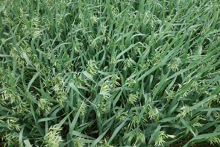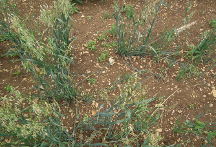Spring 2020 saw the largest area of spring cereals for many years. Although not as large an increase as in spring barley, oats saw a significant increase this year with the English crop seeing a 26% growth in plantings, according to the AHDB, with most of those appearing in spring.
Unfortunately, many of these spring oat crops were hit hard by August’s inclement weather whilst they waited to be combined. As a result, there has been significant seed shed and many reports have been received from agronomists and growers concerned about the potential levels of tame oat volunteers likely to be encountered this autumn, according to Barrie Hunt, UK and Ireland technical manager for Gowan Crop Protection Ltd.
“Whilst glyphosate will solve the problem in the stubbles few real options exist pre-emergence. Thankfully tri-allate, as in Avadex Excel 15G and Avadex Factor, will provide effective control not just of Wild-oats but also those tame oat volunteers, said Mr Hunt.
“Work in spring 2020 examining the plant back interval of a range of crops included tame oats as an indicator species. The study clearly showed tri-allate’s effectiveness in killing oats even when the oats were not planted until 5 months after an autumn application of a standard single dose rate.
“Both Avadex Excel 15G and Avadex Factor delivered comparable results demonstrating both the effectiveness of Avadex against tame oats and also the longevity or staying power of Avadex with it still being effective even after 5 months.
‘With all the focus on Black-grass it’s easy to forget that Avadex was originally introduced as a Wild-oat herbicide and excellent control, of both wild and tame oats, is still being delivered nearly 60 years later!”






